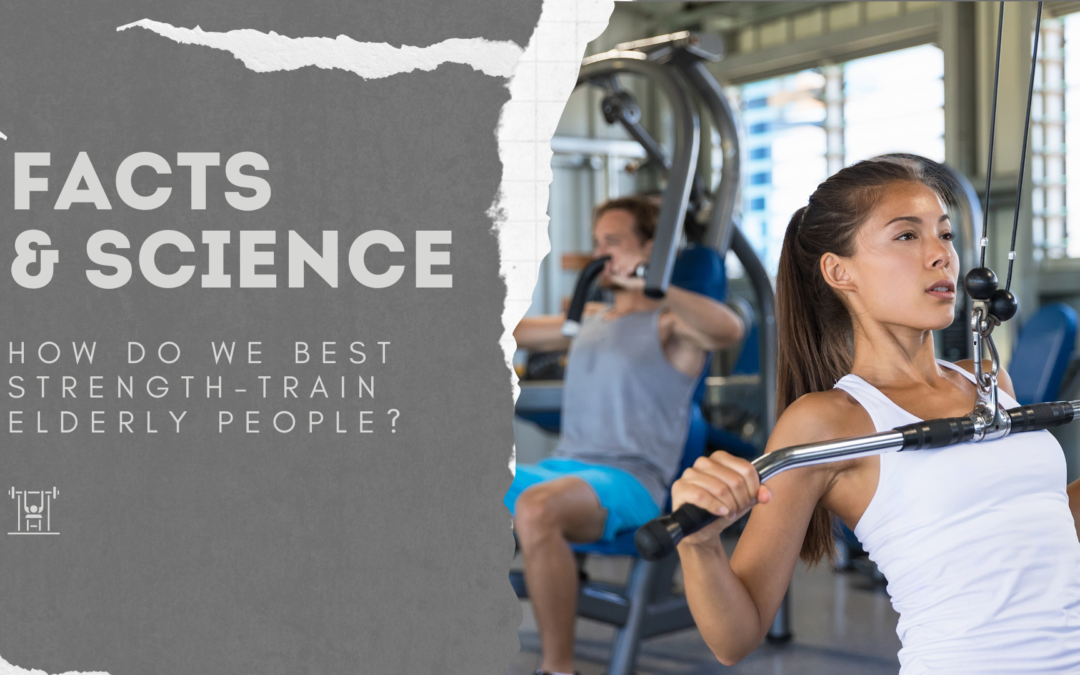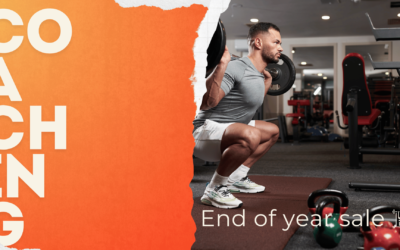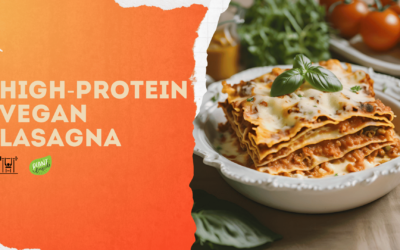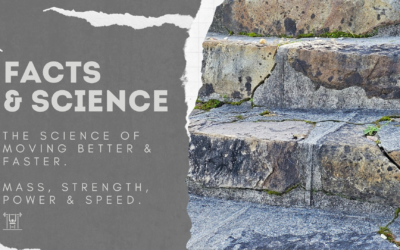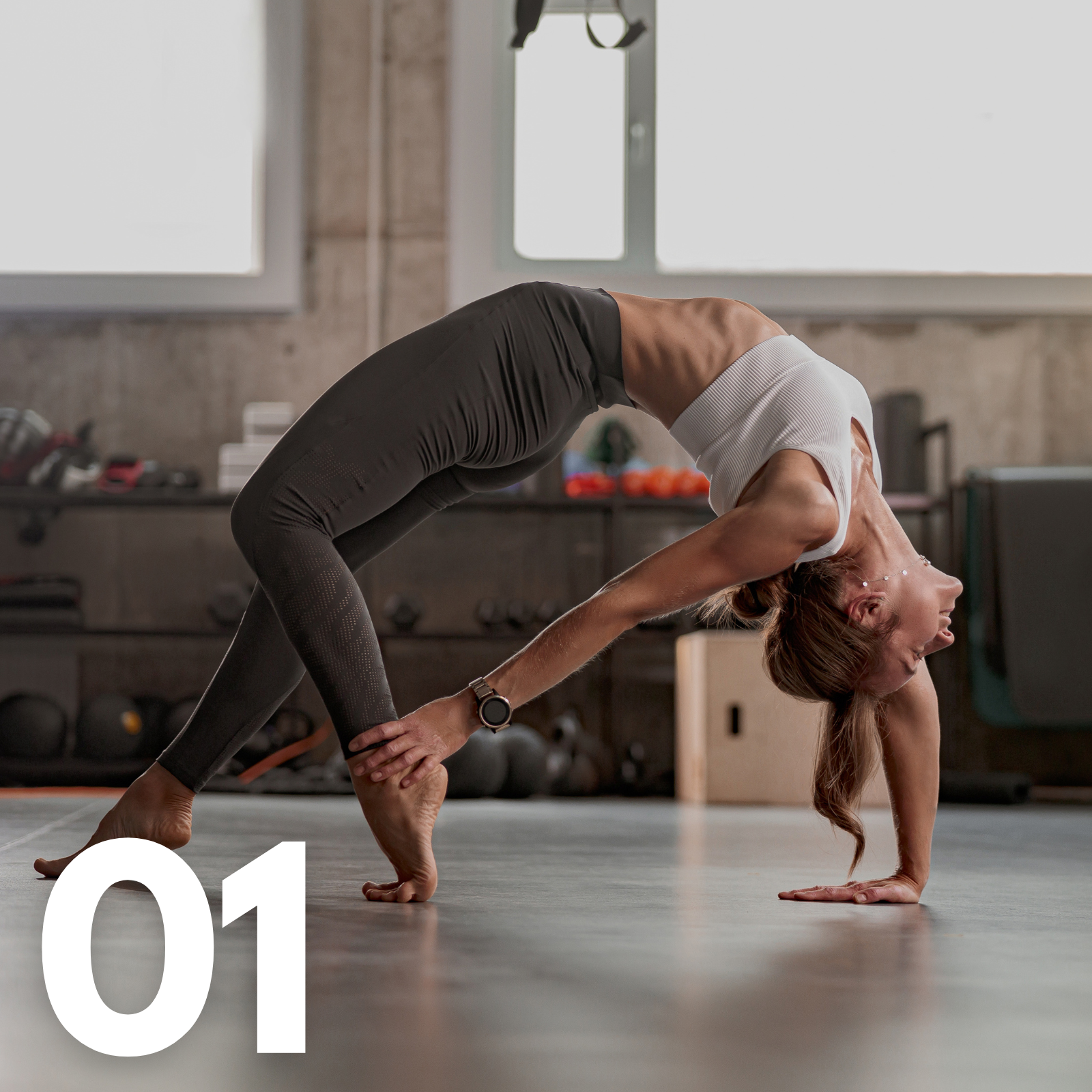
Strength By Fitness
151 studies in total, made up of roughly 6300 adults aged 60 and above.
Welcome to another fact-based article from Strength by Fitness.
The Cited Studies.
151 studies in total, made up of roughly 6300 adults aged 60 and above.
Exercise setup.
The lower volume group in these studies performed roughly 12 sets in total per week of resistance training across two separate gym days.
So, we have 2 sessions per week x 3 exercises per session, and 2 work sets per exercise, and let us be frank, only doing 6 sets in one session is not much at all. It is not very demanding in time, nor will it dramatically challenge people’s ability to recover.
Despite this low amount of exercise volume, it managed to greatly improve lean body mass ( that´s hypertrophy ), physical capacity, as in strength, and muscular endurance, and health outcomes.
Now, I am not saying that the low-volume group did exactly as well as the two higher-volume groups, but their progress was tracking the progress of the elderly, moderate to higher volume groups pretty darn well. But it achieved this with substantially less time demand and a far lower price of recovery.
When we dive into these studies we can find subtle differences, for instance the medium and higher volume resistance training groups improved lower-limb strength, and faster walking speeds. But the important takeaway is that lower types of volume training for elderly, with a higher effort than most of these studies do yields incredibly beneficial results while preserving a massive amount of daily energy.
their conclusion
Lower to moderate volume of resistance training should be recommended in future exercise guidelines, particularly for older adults that are aiming for healthier aging and improved physical capacity instead of the usual decline.
My own coach approach.
I have worked with a lot of elderly clients, healthy ones as well as post-surgery clients.
With every single one, my fact-based approach has always been to lower the volume most other personal trainers have previously had these clients on, while also bumping up their workload.
Why?
No, that´s not because I enjoy tormenting elderly clients.
The reason is plain and simple, fitness and health is all about scientific facts and proper programing and adaptation over time.
The many studies cited down below explain the why with hard-to-ignore data and outcomes. As humans grow older we do not lose our ability to build strength and muscle mass at all.
But there are a few things that do happen.
A. Our capacity for recovery ( and endurance ) lowers, yes, super fit elderly will of course handle higher volumes better, but their capacity for recovery is still lower than it used to be 5 to 20 years ago.
At the same time, most muscle mass loss in our second half of life comes from the strong, and explosive twitch fibers ( type 2’s ).
Do you need help succesfully changing your lifestyle habits?
We provide coaching, online, and on-location, in-person.
The load must go up.
Ergo.
Older clients should go with a lower to moderate workload volume to maintain daily life energy and create room for efficient recovery.
In order to most efficiently combat muscle mass and strength loss and actually build strength, muscle mass, better health, and better physical capacity actual exercise load therefore needs to go up.
Remember volume is going down relatively speaking, by necessity, but we also have to counter the fact-based loss of strength and type 2 muscle fibers that is unavoidable for sedentary people, and elderly that do not lift challenging enough weights.
This combo has worked with 100% of all post-50-year-olds I have ever worked with. It’s worked with my 60-year-old clients and my 70+-year-old clients.
It’s worked with the healthy ones and the ones that’ve recovered from heart surgery and whatnot.
Health & Physical Capacity.
Best of all, not only has this always resulted in a massive strength progression, but it has also created less fatigue and more daily life energy for my clients. Provided pain and injury-free progress, increased mobility, and better health outcomes.
This is a major plus with elderly clients no matter if we are talking about health outcomes, daily life energy, or actual mobility, capacity, and agility.
This is a genuine quality of life improvement.
Now, you might wonder why lifting heavier weights in the gym would result in better mobility.
This is easy, since the human body primarily loses the strongest and most explosive type 2 fibers, we slow down in all forms of movement. The slower most durable muscle fibers, the type 1´s are extremely durable, so they can keep us going for very long. Be it walking, cleaning, cooking, or fixing our garden.
It is, however, the fast twitch fibers, the Type IIA and X fibers that power your ability to walk and run up and down stairs, get off the couch with ease, jump, leg press, bike up that incline hill, kick, skate, ski, and prevent sudden falls.
So by lifting more challenging weights with a higher load, we do not just preserve those essential muscle fibers we can continue to make them stronger, and we can even if we do everything right, continue to add some lean muscle mass even at our twilight years.

How can I confidently say that elderly clients have improved actual health outcomes?
Easy, older people usually go on regular healthcare checkups so you get a ton of high-quality, external healthcare data to supplement the data you track yourself and the way the clients feel.
This, together with all the available scientific literature, allows me to confidently state that every single elderly client I have ever worked with hasn’t just improved their fitness status, mobility, quality of life, and strength, they have improved their health markers and health outcomes too.
Volume.
The volume I generally prescribe for elderly clients is the following ( some fine-tuning applies on an individual basis, as always ).
3 to max 4 exercises in total per session targeting 2+ muscle groups per session.
2 to 3 of those exercises are bigger compound lifts for larger muscle groups. Such as rows for the back, deadlifts, unilateral step-ups, farmers’ walks, dumbbell presses, and leg presses.
We mostly make use of compound exercises due to how they elicit more muscle fibers across bigger movement patterns. This results in substantially better strength in that muscle chains entire muscle length, and the entire range of motion for that movement pattern.
This also allows for bigger weights, fewer sets, fewer reps, and less total gym time. Not to mention that bigger compound exercises with bigger loads provide far better cardiovascular benefits.
Making it another win.
Yes, it is true, bigger compound lifts demand a higher price of recovery, but that is countered by doing fewer reps and sets in total.
Examples of exercises, range from big compounds to smaller but effective exercises.
Deadlifts ( floor, pins, RDL).
Farmers walk ( dumbbells or trap bar )
Leg press.
Leg curls, extensions.
Rows, Seated, dumbbells, verticals, landmines.
Dumbbell, machine & cable chest presses.
Hanging leg raises
Wood chuckers.
Pullovers.
Shoulder presses ( machines, dumbbells, barbells )
Tricep, dips, pushdowns, pullovers, overhead.
Lateral raises, dumbbells, and cables.
Posterior shoulder/scapula work.
Weighted Unilateral step-ups.
Shrugs.
Heavy bag, ball deadlifts + throws from as high up as each client can lift the object.
Wheel flips
Sledgehammer work
Dead stop, pin squats, or hacklifts.
Basic, big pillar exercise choices.
I program 1 or 2 non-exhaustive warm-up sets for my elderly clients per exercise, and we do max 7 reps for our warm-up sets because we are not looking to reach failure or tax our cardiovascular system, or exhaust our skeletal muscles with our warm-up sets.
Once ready, we do 1 or 2 heavy workload sets per exercise, these sets target 5 to 12 reps courtesy of the higher weight. If the plan is to do 2 work sets we keep RIR at roughly 5 on the first work set in that exercise.
This helps the human body to recruit more type 2 fibers and motor units without exhausting your body and its muscles. Already providing incentives for adaptation but making room for an even bigger effort in the second and last work set.
We make use of a full range of motion and explosive contractions on every single set, including our warmup sets.
And that’s all.
The biggest load and effort will happen on the last set in all exercises. This makes sure that all clients can progress for years to come in a strong, and injury-free way.
RIR lands in the 1 to 3 range on that last set and we do that for every single exercise. Now, I do not like to push my older clients to a proper RIR 0 ( failure or beyond ) because doing so shoots the price of recovery through the roof, and that´s the one area where elderly people will lose some capacity relative to their younger selves.
But, as I mentioned up above, on a strictly individual level there are always some adjustments. I have older clients who really like to push themselves, so they sometimes get to do a third work set. And sometimes when they are really feeling good those clients will push just a little closer to failure.
Not due to my own coaching, but people are autonomous and sometimes you have to let people lose and enjoy taking things a bit closer to the edge.
When clients do this and the result is a new personal best at the ripe age of 65 or 72, or similar, the reward is increased joy, increased quality of life, health, strength, and happiness.
And that’s a fire that fuels the lifelong drive to keep their healthy fit habits alive and well.
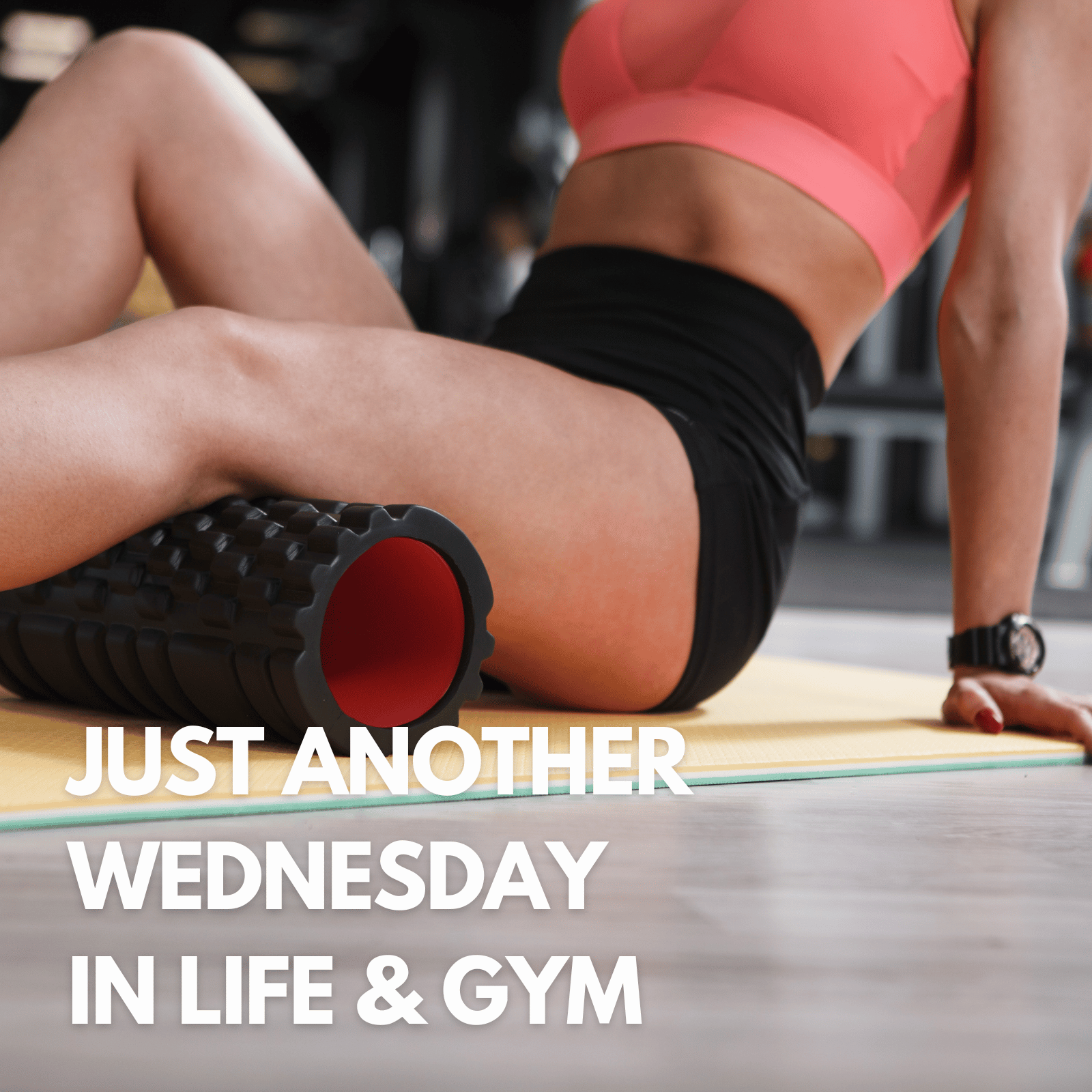
Frequency and rest.
Ideally, lift 3 to 4 days per week. Older clients need a lot of exercise-free days per week. Do not underestimate this need.
For clients with lower time commitments or an even lower capacity for recovery, even 2 sessions per week have worked wonders every single time.
Rest in-between sets: 5 to 7 minutes.
Older clients that strength train recover way better with a proper strength-based set rest time, and it doesn’t hurt lean mass progression or health outcomes either. Not to mention that it makes for a much better day and exercise session because exhaustion levels will be far lower.
Longer rest time drastically cuts down on post-exercise exhaustion too without losing any progression in strength and muscle mass, physical capacity, or mobility.
Because remember, older people mostly need to work their type 2 fibers in their muscle’s actual full range of motion in order to build both strength, muscle mass, cognitive capacity, and pain-free mobility.
So challenge any aches that want to reduce that range of motion and give them a proper rest time between every set 💪💪. In between sets, stretch them, talk to them, and entertain them like the wise coach guru that you are. Older clients also see you as a gym buddy, and that´s a quality of life metric that’s increasingly important the older you become.
Supplement with prescribing nonexhaustive daily walks, and 1 or 2 sessions of weekly endurance training, biking/rowing/swimming at a higher effort than the daily walk. At a volume that they can tolerate and enjoy and recover in full from.
Don’t believe that elderly people mostly lose type II fibers?
Well, you are in luck. Here´s a short little data set from one of the many studies that look at human aging, fitness, and health.
In these numbers, what you see is that despite being recreationally active ( but not strength training ), these older, physically fit, and active men, aged around 69 had on average.
A: 32% smaller type II fibers
B: 53% more type I fibers ( This comes at the expense of having fewer type II fibers, so no, its not a positive )
C: 2.6x more denervated fibers
D:18x more grouped type I fibers
E: The older muscles also had around 29% fewer capillaries, and 38% less satellite cells surrounding their remaining type II fibres.
What was the measured Strength Level in this study?
All participants performed a standardized maximal single-leg knee-extension strength test by doing 10-repetitions to failure.
The younger group managed to lift 58 kilos ± 6kg for 10 repetitions versus the older group that only managed to lift 30kg ± 7 kg for 10 reps.
So, is this just the unavoidable curse of human ageing? Hell no.
This is the outcome of choosing to not lift challenging enough weights. So when we compare physically active, but not strength training older men with younger men as they did in this study, keep in mind that this outcome can mostly be prevented and even reversed by choosing to lift challenging enough weights on a weekly basis, well into your 80´s.
There is no reason at all for a healthy, lean 70-year-old man to only manage 30 kilos in the leg extension. And this is good news, because you can do something about it.
Further, health status, BMI and activity level where evenly matched in both age groups.
Your takeaway 100% should be this.
Go into every week that remains of your life and lift good enough weights with a big enough effort, and regrow some of the strength, the size and numbers, and quality in your type 2 fibers and reap tremendous health and quality of life benefits in your remaining older years. Walking, jogging and running is great, and we all need to do that, but its not enough to only focus on weekly cardio.
The reason for saying that is that strength training + cardio provides superior health and fitness outcomes relative to only doing one of those fitness activities.
So do it all, every week, no matter age and time restraints.
Read this article over at Medium if you are a paying Medium member.
Citations.
1. Effects of resistance training on physical function.
Radaelli, R., Rech, A., Molinari, T. et al. Effects of Resistance Training Volume on Physical Function, Lean Body Mass and Lower-Body Muscle Hypertrophy and Strength in Older Adults: A Systematic Review and Network Meta-analysis of 151 Randomised Trials. Sports Med (2024). https://doi.org/10.1007/s40279-024-02123-z
2. Age-related loss of muscle mass and strength.
Ageing leads to selective type II myofibre deterioration and denervation independent of reinnervative capacity in human skeletal muscle – Horwath – Experimental Physiology – Wiley Online Library
strength by fitness
podcasts
recent articles
Unlimited Online Coaching, End of Year Discount.
End of year sale. 12 months of unlimited private online coaching from Strength by Fitness for only 200€.
The Oxygen Difference Between Intervals & Steady State
Intervals are far more demanding than steady-state exercise. But, read on for the why and take that knowledge with you as you program smarter fitness plans.
The human body will use way more energy moving into a higher level of physical effort than it does once a steady state has been achieved.
Protein-Packed Plant-Based Lasagna Dream ( 170 grams of protein )
Welcome all to a tasty, and phenomenally protein-packed plant-based lasagna.
This meal for two that will provide roughly 170 grams of plant-based protein and 1500 calories of high-quality energy.
Enjoy.
Let us talk about the crossroads of body mass, muscle fibers, strength, speed, agility, and explosive power and how it is all connected.
Welcome to another Strength By Fitness article, today today we will talk about the crossroad of body mass, muscle fibers, strength, speed, agility and explosive power and how its all connected.
In short, this article will explore how you should train to become stronger, faster, and more explosive as an athlete and person.
This comes into play when your total mass is already too big for your relative strength to successfully power even faster, and more explosive movement.
Coach Mike, Strength By Fitness
Long-term stress harms human health in a major way.
Long-term stress harms your health in a major way. But a healthy fact-based lifestyle mitigates a lot of that negative impact.
And just as you can learn to eat healthier foods, and create healthier food, exercise, and lifestyle habits you can also learn how to reduce chronic stress.
Gluten-free Pancakes & Berries. High-Protein And Plant-Based.
Welcome back, people. Today we will unleash one of our personal pancake favorites. A tasty, high-protein plant-based pancake dream, rich in texture and taste, nutrient-packed, and healthy with a high satiety impact. Served with whole berries.
59 grams of Protein and 579 calories.
Enjoy.
We appreciate you
so stay healthy & never stop training
Contact
Private In-App Messaging is Available For All App + Coaching Clients
Adress
Coaching
Available Online on IOS & Google Play, and In-person.
